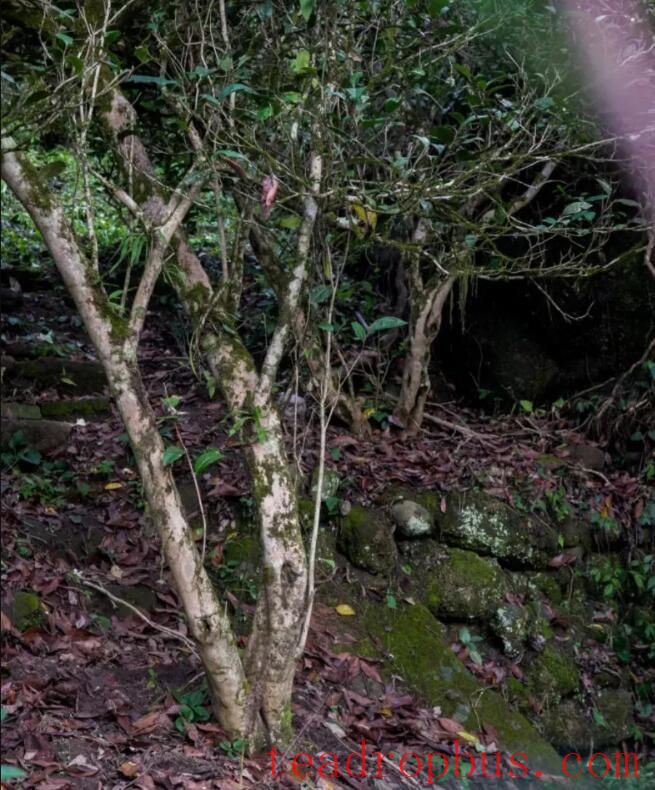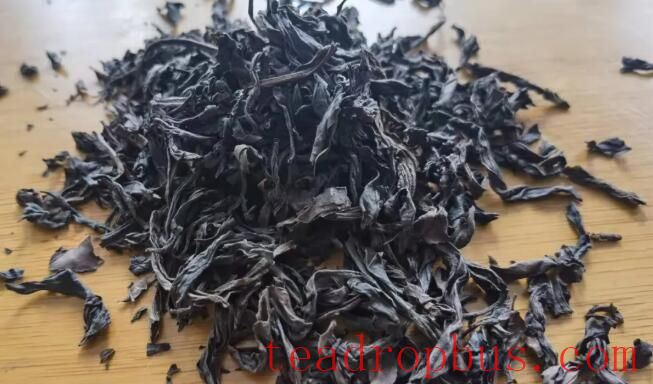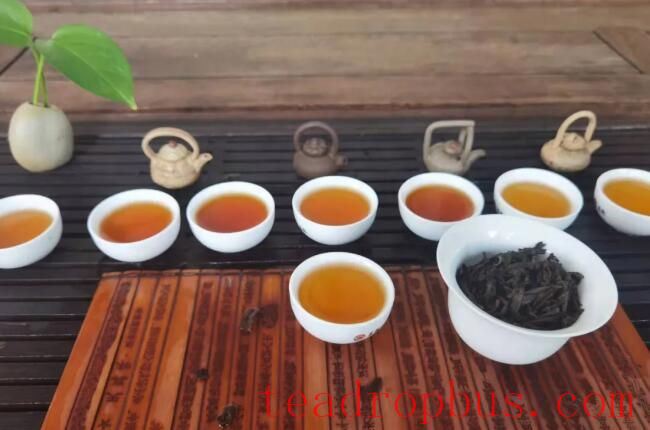An old arbor Tea tree refers to a tree of advanced age, generally over 50 years old. These trees often have moss growing on their trunks and are usually not fertilized or pruned, allowing them to grow naturally, which results in lower yields.

The “arbor flavor” of old arbor Shuixian can be summarized as follows:
First, there is the mossy flavor, due to the long age of the tea tree and the presence of moss on its trunk. Most old arbor teas exhibit this characteristic.
Second, there is the aroma of bamboo leaves or the scent of unpolished rice. There are various interpretations of this; some say it's a terroir-specific aroma, while others believe that well-made old arbor teas always possess this scent. Some argue that this is not an exclusive feature of old arbor teas, as other traditionally baked teas may also exhibit a bamboo leaf aroma after the fire-retrogression process.
Third, there is the woody flavor, which is the essential taste of arboreal varieties. Many infusions will eventually develop a woody flavor, but high-quality old arbor teas will display this from the very first few steeps and maintain it throughout.

When tasting old arbor Shuixian, you'll experience a rich and enduring flavor, followed by a cooling sensation in the mouth—something not present in younger tea trees. Through tasting, one can appreciate the simple yet substantial qualities of its aroma and taste.
In the Qing dynasty, veteran tea connoisseur Liang Zhangju described the arbor flavor in his work “Tasting Tea” with these unique insights: “The taste of arbor flavor must be quietly and attentively experienced—it is subtle, subtle indeed!”
A good old arbor tea, upon careful sipping, reveals a rich complexity with a slight roughness and astringency, giving a sense of aged depth. After swallowing, the initially perceived astringency and thickness gradually Peel away layer by layer, each layer revealing a different sensation. Amidst the clarity and Sweetness, these layers dissolve and swirl in the mouth and throat. Soon, the initial astringency dissipates and releases its grip.

The tea's fragrance is invigorating, evoking the fresh, natural scent of the forest, reminiscent of moss, wild orchids, honey, and fruit. The liquor transitions from thick and smooth to delicate and silky, with a lively and sweet taste, presenting a myriad of flavors. The tea has a strong character with a lingering aftertaste. Quietly savoring, the tea's aroma and taste between the throat and mouth can seem to last for days. After the eighth infusion, the aroma becomes more delicate, and the liquor tastes sweet upon entry. By the fifth infusion, the floral fragrance weakens, but the mossy flavor becomes clearer and persists until the tenth infusion and beyond, still discernible.
The arbor flavor of old arbor Shuixian can be comprehensively described as “thick, smooth, sweet, and mellow.” This is manifested in the brewed tea as being viscous, smooth, sweet in return, with a pronounced throat resonance and a long-lasting aftertaste.
The appearance of old arbor Shuixian is characterized by robust, twisted leaves with a color intermingling gold and dark brown, lustrous and with a faint white bloom. High-altitude old arbor teas have tighter twists with a lighter hue of yellow, gold, and black. When brewed, the liquor takes on a golden, orange-yellow, or reddish-yellow hue, turning amber in aged teas. The taste is smooth and full-bodied, with a prominent arbor flavor.
The liquor of old arbor Shuixian is a clear orange-red. In the first three infusions, there is the scent of unpolished rice, wood, and the characteristic aroma of the Shuixian variety. For high-altitude old arbor Shuixian, lifting the lid of the brewing vessel reveals a scent of moss and orchid, which can uplift the spirit and evoke a sense of detachment from the world.
One might say that the arbor flavor is a taste of time-worn wisdom!